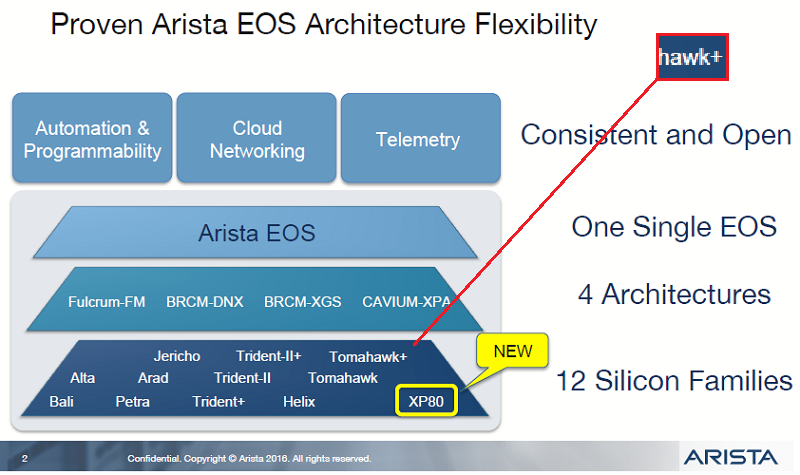Santa Claus !!
Is there really a Tomahawk-plus? Product names like Trident and Tomahawk are created in the marketing department. There is some evidence i.e. Reindeer turds falling from the sky that there is something there.
Alpha Networks connected the name Tomahawk-plus with a Broadcom Part BCM56963 in a slide presentation about their products. That part has six 100 Gb/s ports and 48 25 Gb/s ports.
On October 31, 2016 Timothy Morgan wrote an article celebrating the introduction of the Tomahawk-II BCM56970 in which he said:
| The top-end Tomahawk ASIC has 680 Mb (85 MB) packet buffer and supports 3.2 Tb/sec of aggregate switching bandwidth. It can drive 32 ports at 100 Gb/sec, 64 ports running at either 40 Gb/sec or 50 Gb/sec, or 128 ports running at 10 Gb/sec or 25 Gb/sec. The Tomahawks can do a port-to-port hop in 400 nanoseconds or less, which is pretty fast; the chips support RDMA over Converged Ethernet (RoCE) direct memory access technology to get that low latency, a technique that was borrowed from InfiniBand, which still has a latency advantage at 100 Gb/sec speeds. |
More evidence ? Arista did a slide show in December 2016 that was focussed on the introduction of new Cavium switches but mentioned in passing the breadth of silicon of which Arista has tasted. Even though Broadcom has not put out a tomahawk-plus press release, Arista is talking:

More evidence. . .
Carlos Cardenas explains what amounts to a Broadcom soap opera in his blog at http://packetpushers.net/slow-adoption-25g-switches/. Tomahawk came out before the standard was fully baked. For 100 Gb/s ports everything was OK. Interoperability at 25 Gb/s requires negotiation of FEC (forward error correction) that Tomahawk couldn't do. The reason for Tomahawk+ was to fix the flaws in its predecessor. This explains the lack of fanfaire around it's introduction. It is not popular to talk about failures. Just fix them quietly and move along. Broadcom needed to fix this because ASICs that came out after the standard from Mellanox and Cavium don't have this problem. `